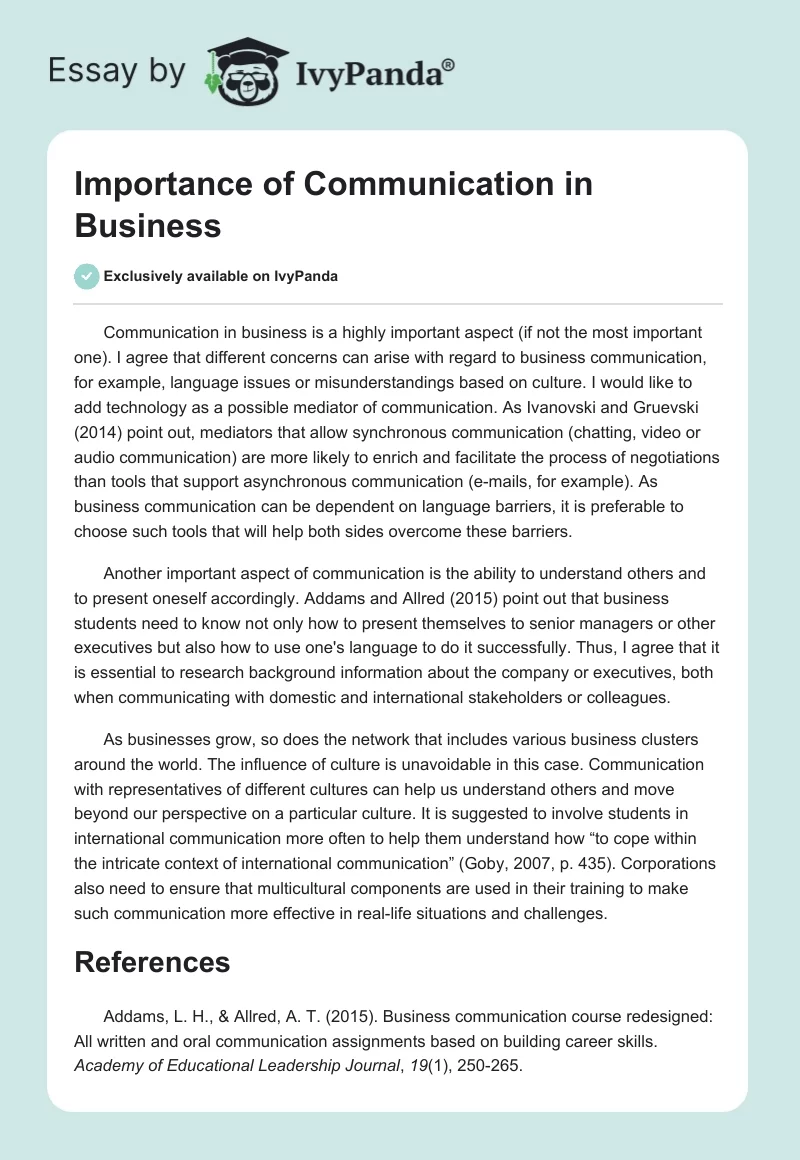Communication in business is a highly important aspect (if not the most important one). I agree that different concerns can arise with regard to business communication, for example, language issues or misunderstandings based on culture. I would like to add technology as a possible mediator of communication. As Ivanovski and Gruevski (2014) point out, mediators that allow synchronous communication (chatting, video or audio communication) are more likely to enrich and facilitate the process of negotiations than tools that support asynchronous communication (e-mails, for example). As business communication can be dependent on language barriers, it is preferable to choose such tools that will help both sides overcome these barriers.
Another important aspect of communication is the ability to understand others and to present oneself accordingly. Addams and Allred (2015) point out that business students need to know not only how to present themselves to senior managers or other executives but also how to use one’s language to do it successfully. Thus, I agree that it is essential to research background information about the company or executives, both when communicating with domestic and international stakeholders or colleagues.
As businesses grow, so does the network that includes various business clusters around the world. The influence of culture is unavoidable in this case. Communication with representatives of different cultures can help us understand others and move beyond our perspective on a particular culture. It is suggested to involve students in international communication more often to help them understand how “to cope within the intricate context of international communication” (Goby, 2007, p. 435). Corporations also need to ensure that multicultural components are used in their training to make such communication more effective in real-life situations and challenges.
References
Addams, L. H., & Allred, A. T. (2015). Business communication course redesigned: All written and oral communication assignments based on building career skills. Academy of Educational Leadership Journal, 19(1), 250-265.
Goby, V. P. (2007). Business communication needs: A multicultural perspective. Journal of Business and Technical Communication, 21(4), 425-437.
Ivanovski, I., & Gruevski, D. (2014). Usage of virtual communication tools in business communication and negotiation – a factor of increased efficiency. TEM Journal, 3(2), 167-174.


